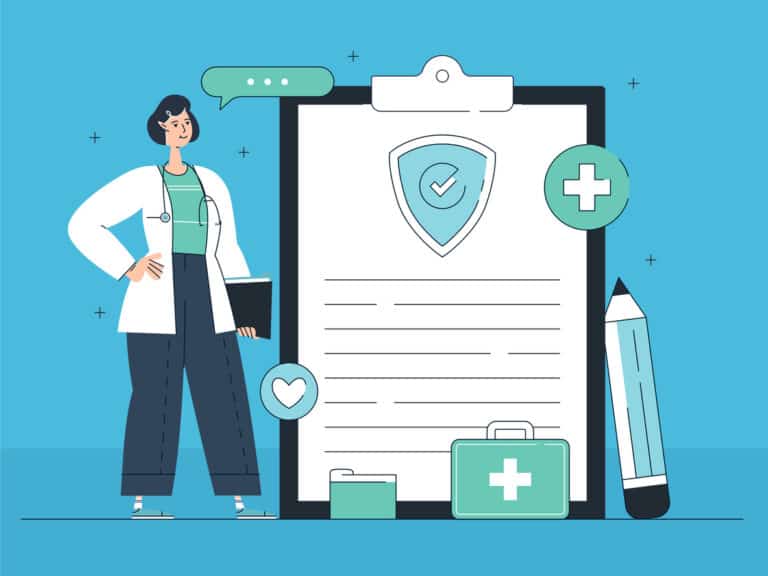Imagine a world where patients don’t have to go to the hospital to get an X-ray of their sinuses. Where they wouldn’t need to worry about attending a follow-up appointment to review their results. Where the inconvenience inherent to the traditional X-ray process was eliminated, leading to less patient leakage, more surgeries scheduled, better patient health and greater long-term profitability for your practice.
Welcome to the world made possible by the in-office CT scanner.
Improving Lives One Scan at a Time
More and more ENT practices are using in-office CT scanners to evaluate patients with chronic sinusitis or inner ear issues. Part of the reason for their popularity is that getting an in-office CT scan is faster, easier and more convenient for the patient.
Here’s what the in-office scanning process looks like:
1) The doctor sees the patient and determines that they require imaging to diagnose the patient’s issue.
2) The patient is escorted down the hall to the in-office CT scanner.
3) The patient is scanned in approximately 18 seconds.
4) The doctor can quickly review the scan and discuss the next steps with the patient.
Now compare that to the traditional multiday method, which requires the patient to go to an initial appointment one day, spend time at a different location to get their imaging another day and come back for an appointment to go over the results another day. It’s clear why a patient would prefer having an in-office scan. It eliminates two additional visits for the patient, allowing them to get treatment more quickly and feel better faster.
Condensing the process into a single day by using an in-office scanner also has a huge benefit to the practice: It prevents patient leakage. Practices that don’t have an in-office scanner risk losing 20% of their patients at each step in the multiday process—20% won’t go to get the imaging done at the other facility, and another 20% of those remaining patients won’t return to review their results. That means those practices are losing a significant chunk of patients through the multiday process, along with the potential revenue that goes with them.
Make a Sound Investment in Your Financial Future
It’s a fact of life: Sometimes you have to spend money to make money. You may spend well into the six-figures for a CT Scanner. In some cases, you may also need to pay for state-mandated lead shielding around the scanner.
Fortunately, you can finance these costs through Fuel’s 0% interest payment program with Xoran, an established and well-known manufacturer of in-office CT scanners. If you do so, you can expect a manageable monthly payment, with a break-even of about 25 scans per month, paid off in 5 to 7 years.
You want a good return on your investment, so let’s look at how your practice will benefit financially from an in-office CT scanner.
Insurance reimbursements can vary when it comes to CT scans. Some forms of insurance may not pay for scans at all, but the average payment per scan sits between $140 and $175. Your practice needs to complete about 25 scans a month to break even and make the monthly payment.
But the real payoff on your investment comes from the increased number of surgeries you’ll book because of your in-office scanner, with reduced patient leakage. Even if insurance doesn’t pay for some of the scans, you’ll enjoy a boost to your bottom line through a fuller surgery schedule.
The best part? You can feel good knowing you’re helping improve the lives of patients who previously may have delayed or not gotten the treatment they needed to alleviate their chronic health issues.
A Case Study of a Fuel ENT Practice
Implementing an in-house CT scanner in 2017 yielded impressive results for one Fuel ENT practice with three to four otolaryngologists.
The practice typically completes 40–50 scans per week (160–200 a month) at an average insurance reimbursement rate of $140. Within a month of implementing the scanner, the practice saw a significant uptick in scheduled sinus surgeries and continues to complete more surgeries per month than they did before adding an in-office CT scanner.
The bottom line? Thanks to their scanner, this practice now nets an additional six figures a year.
Want to know more about the ins and outs of adding an in-office CT scanner to your practice? Talk to your Fuel regional manager today—and make sure to ask them about Fuel and Xoran’s scanner financing plan that offers 0% interest.
TEASER
Imagine a world where the traditional X-ray process was faster, easier and more convenient, leading to less patient leakage, more surgeries scheduled, better patient health and greater long-term profitability for your practice.
Welcome to the world made possible by the in-office CT scanner.


